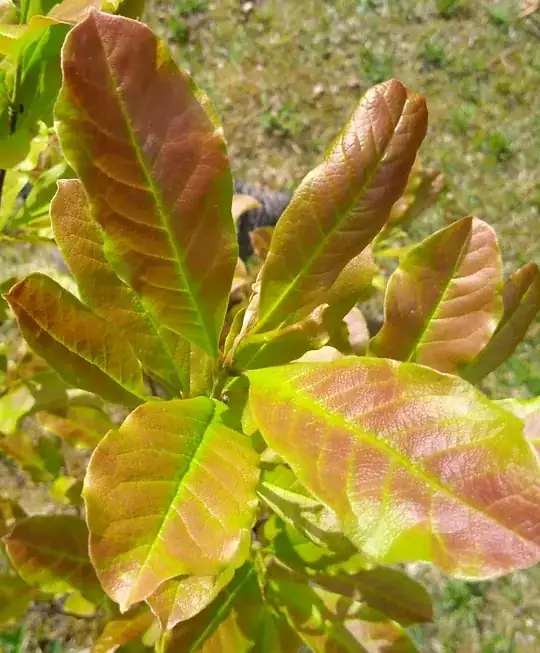I'm going to hazard a guess that the plant has phosphorus-defieciency, which can cause the red-type look you're talking about.
The gearing up to photosynthesize comment was probably in reference to how plants can exhibit similar symptoms when it's cold at the end and/or beginning of the season (although, I don't grow magnolia trees; so take that with a grain of salt). However, with a good supply of phosphorus, they're less likely to do this as readily even when it's still cold (but it can still happen even then, if it's cold enough). But, if it's happening when it's not cold, that's a good indicator of phosphorus-deficiency.
I also suspect another nutrient imbalance. Phosphorus-deficiency symptoms often accompany such things as high soil-pH. Phosphorus is needed to help the plant utilize calcium (calcium can potentially be over-abundant when the pH is high, and decrease the availability of phosphorus). High pH can cause other nutrient-deficiency symptoms, too. NPK in general can be more important when the soil pH is high (especially when it's hot and sunny).
High pH isn't the only other cause of phosphorus-deficiency symptoms, though. The soil might just be low in it, or it might be high in something that lessens its availability.
If it were me, I'd give it some phosphorus, Epsom salt (magnesium sulfate), and general fertilizer. My preferred kinds of phosphorus are monopotassium phosphate and monoammonium phosphate, if you need suggestions.
Magnesium-deficiency can also make leaves purple. Magnesium and calcium need to be in balance.
Phosphorus-deficiency can also cause delay in plant maturity. It can cause under-sized leaves. It can cause other issues.
Magnesium is important for heat-tolerance.
